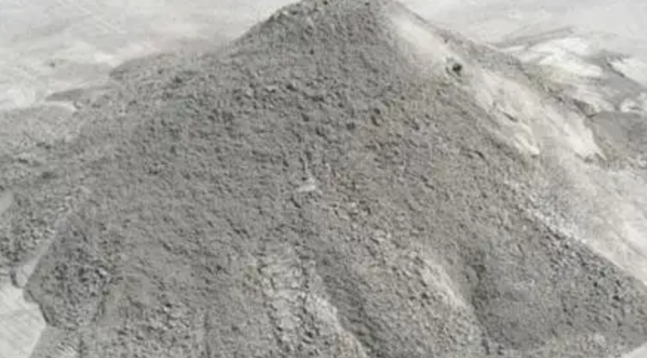When it comes to Mars, then many people will associate it with Musk, and Mars is inextricably linked to Elon Musk, as Musk may be the first person on Earth to achieve the feat of landing on Mars. As the CEO of space, Elon Musk's dream of outer space may be incomprehensible to most people, but for him, it may be as big a feat in space history as the first moon landing.
Musk has boasted that astronauts on the Red Planet could be a reality by 2029, with the potential to make discoveries that change everything. In fact, Musk has long toyed with the idea of setting up a settlement on Mars. He wants humans to become a multi-planetary species and be self-sustaining on other planets. So what is the purpose of this mission? What are the progress reports so far?
Musk has talked about the purpose of his Mars mission in the past. He points out that crises on Earth are becoming more frequent, that anything can go wrong on Earth, and that this is essential for the continuation of life itself. Like the asteroid 66 million years ago, the dinosaurs were destroyed, and the same could happen to us and other species. It's just that the terrain on Mars is pretty dangerous, as countless studies have shown. The astronauts had to overcome unexpected challenges, including solar panel dust buildup and tiny Martian rocks 39bet-kết quả bóng đá-kết quả xổ số miền bắc-kèo bóng đá -soi cầu bóng đá-đặt cược.
But Musk thinks humans can overcome these problems, and he's even seen pictures emerge of astronauts on Mars sometime in 2029. Musk's preliminary plan is for the first people to arrive on Mars in the mid-1920s, building an entire city that everyone has enough money to access, not just scientists and researchers, but ordinary people. But building a self-sustaining city like the one on Mars would consume a horrendous amount of energy, about 1 million tons of cargo, according to Musk's 2019 estimate. If it costs $100,000 per ton to transport cargo to Mars with a future starship, a Martian settlement would cost about $100 billion. Musk has predicted that the total cost could reach $10 trillion.
But some are against the idea, arguing that Musk should be focusing on immediate issues: world hunger and poverty, and that Musk's current project will create an even wider divide between socioeconomic classes. But Musk has ideas of his own, mentioning that a disaster on Earth could spell the end of the human race, but if a base could be established on another planet, such as Mars, humans might survive, given that Earth is about 4.5 billion years old.
Beyond that, Musk sees the meaning of human life in human expansion, and the possibility that the world beyond the atmosphere is hostile, cold and harsh. But what does it matter when we look at the stars to extend our range of existence? Mars colonization and exploration has long been a human aspiration, and NASA's goal is to get astronauts there by 2030. It shows that if space has a plan, fantasies can come true.
 When the Mariner 9 and Viking space probes sent the first images of Mars back to Earth, there was evidence that they claimed to have found a 12-mile-wide lake about a mile below the planet's South Pole. In the same year, a study published in Science by the US Geological Survey reported finding eight spots on Mars where large patches of ice between 1 and 100 metres below the surface had been exposed by erosion. Although there is currently no equipment to extract water from Martian soil, NASA believes Mars is the most likely second planet for human habitation.
When the Mariner 9 and Viking space probes sent the first images of Mars back to Earth, there was evidence that they claimed to have found a 12-mile-wide lake about a mile below the planet's South Pole. In the same year, a study published in Science by the US Geological Survey reported finding eight spots on Mars where large patches of ice between 1 and 100 metres below the surface had been exposed by erosion. Although there is currently no equipment to extract water from Martian soil, NASA believes Mars is the most likely second planet for human habitation.
Astronauts on the International Space Station have just completed an experiment that successfully showed they can mix cement in microgravity concrete. The sturdy protective material is already used to cover workers at nuclear power plants on Earth. One day, humans will be able to use it to build habitable structures of Martian soil, and future missions to Mars will help scientists and astronauts deal with a range of problems that could put human lives at risk. The most challenging hurdles to overcome now include access to water, surviving in a cold world without oxygen and controlling deadly radiation levels.
Not only that, but the discovery of boron on Mars raises the possibility that life once existed there. Because one potential link between basic chemical compounds and RNA is borate. Without RNA, you can't have life. The presence of boron suggests that if there is organic material on Mars, these chemical processes may have occurred.
If all goes according to plan, space must have starships ready to go to Mars. The super-heavy booster will allow Starship to break records, possibly reaching 3,800 tons in the future. It now has a propellant capacity of about 3,400 tons. The number of engines in the booster has varied from 29 to 37 during development, and currently stands at 33. It now has about 7,600 tons of thrust. But that power is expected to grow over time. By comparison, the Saturn V spacecraft that carried humans to the moon had a thrust of about 7.5 million pounds. The Saturn V remains the most powerful rocket ever launched.